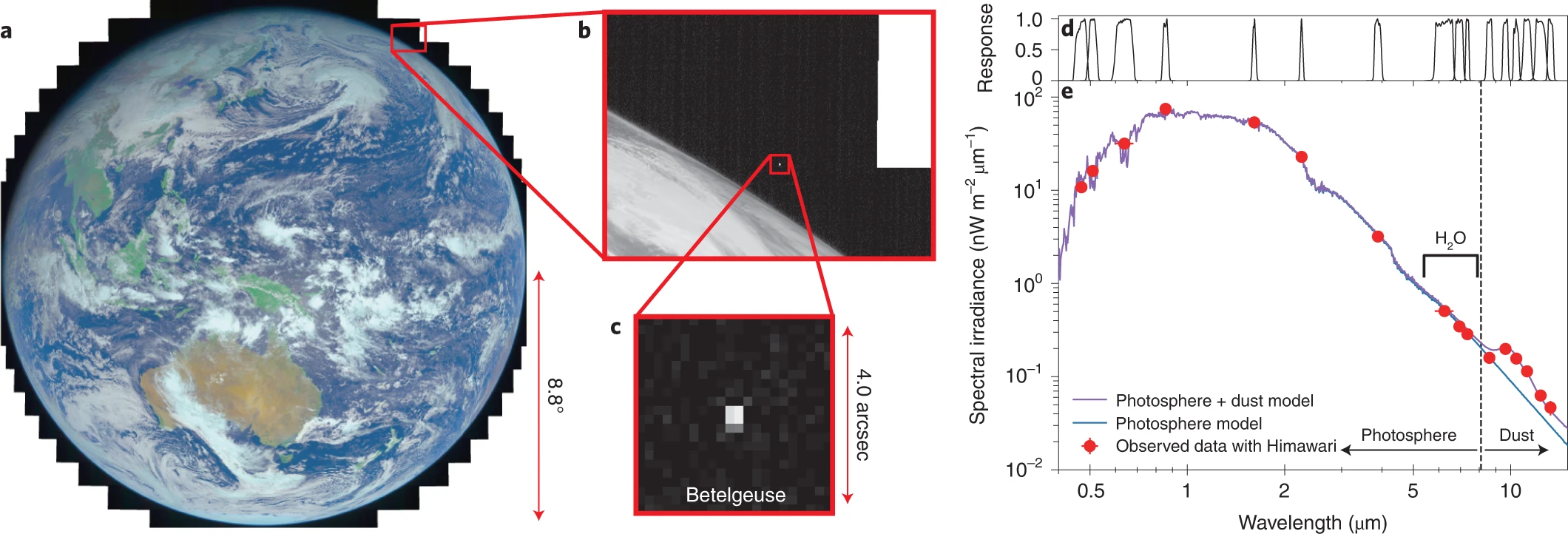According to CNET, just a few months before the covid-19 pandemic really began, the world was paying attention to a distant superstar Betelgeuse, which is about 700 light-years away from the earth. The huge "furnace" suddenly darkened, and its brightness became only 1/10 of that of normal. Some people think it indicates an explosion, but the rumors of the star's demise are greatly exaggerated. A few months later, it lit up again Several research groups tried to explain what caused the "great dimming event". One of them analyzed hundreds of pictures of the star and found that the Stardust probably blocked our view from the earth

In June, 2021, their research showed that Betelgeuse probably spewed out gas, which then cooled and condensed, making the star dark. Another team believes that the star is also cooling a little bit, and this change may also lead to a decrease in brightness. At least, it contributed to the formation of dust clouds.
Published in [Nature] on Monday( https://www.nature.com/articles/s41550-022-01680-5 ) 》In a new study in the journal, three astronomers detailed their own amazing discoveries. They were able to find Betelgeuse lurking in the background of images taken by the Japanese Meteorological Satellite himawari-8. This accidental discovery helps to confirm some early work, uncovers the origin of the "great darkening event", and points out a new method of "neighbor" of the universe that we have not explored.

As the name suggests, himawari-8 is the eighth version of Himawari satellite operated by the Japan Meteorological Agency. It is in geostationary orbit, 22236 miles from the equator. This is more than 90 times farther than the international space station.
At this location, the satellite takes optical and infrared images of the whole earth every 10 minutes, mainly to help predict the weather in Asia and the Western Pacific. For example, it took a large number of images for the Tonga volcano eruption on January 15. However, by looking at the images dating back to 2017, a trio of Japanese researchers went to find a needle like light spot, which would be Betelgeuse, lurking in the space behind the earth. They found it.
When studying the needle like light, the researchers came to the same conclusion as their predecessors. Betelgeuse darkens because of some natural changes in dust and its light. This is not so exciting, but it is a good proof that we are all on the right track. This is the whole content of the scientific process. Interestingly, a meteorological satellite can provide these data first.
This could be a big deal for astronomers. Building and launching new space telescopes is not cheap or easy. But There are already satellites in earth orbit that may be able to do similar work.
Simon Campbell, an astronomer at Monash University in Australia, said: "Himawari is like a free space telescope!"
For example, meteorological satellites such as himawari-8 continuously image the earth and the space around our planet, providing a large amount of data for screening. This is important because astronomers usually buy time for telescopes and set aside blocks for their projects so that they can control the focus position of the telescope.
For example, when Betelgeuse mysteriously darkened, some of the most powerful telescopes on the ground had been scheduled to look elsewhere. Among them, Chile's very large telescope gave a team the opportunity to use its telescope for observation.
Campbell pointed out that there is a story about observing space. You can look at the earth imaging satellites in orbit and reuse them to study the background stars. Another advantage of this is that they can observe within 24 hours and may be able to see more wavelengths of light, such as infrared, which is blocked by the earth's atmosphere.